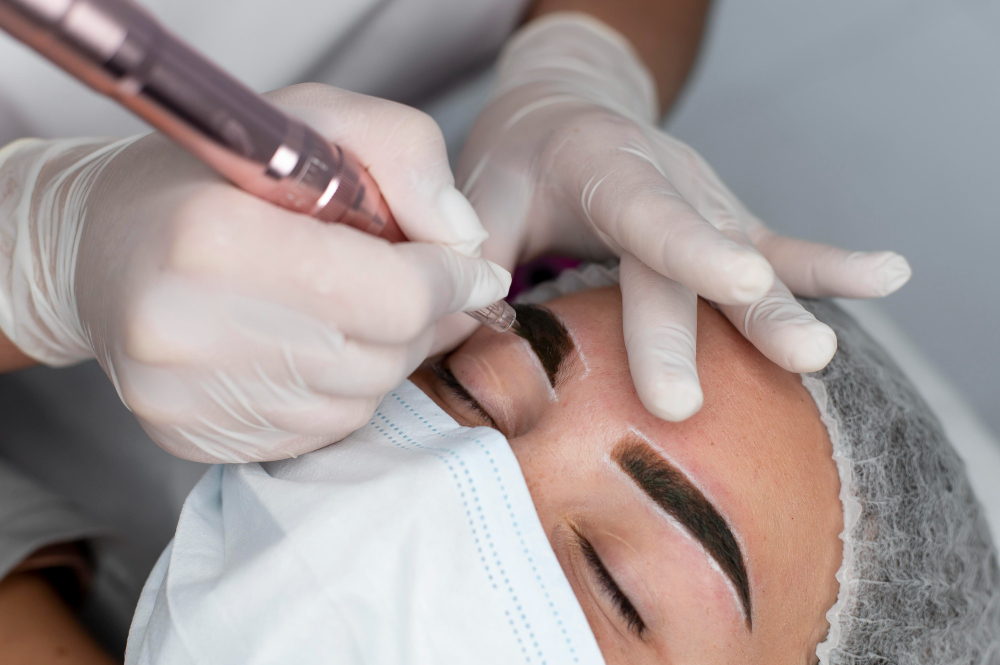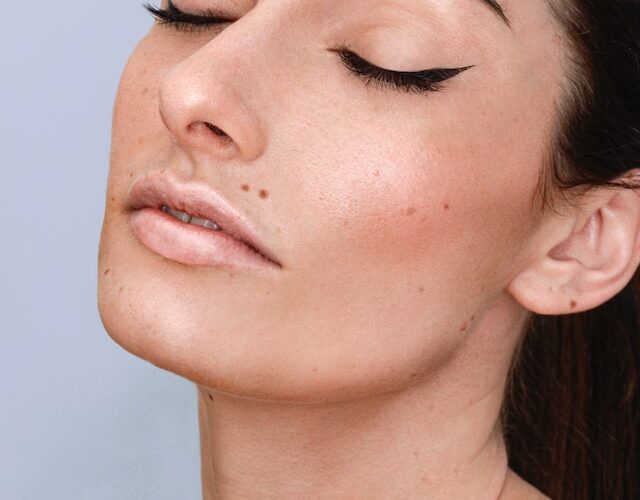Ensuring a smooth journey into the world of brow and lash dyeing involves diligent preparation and taking safety measures. Before the procedure, it’s crucial to be aware of potential allergens present in the products. Patch testing emerges as a key practice, allowing individuals to identify any adverse reactions before committing to a full application of brow and lash dye.
What can go wrong with brow and lash dye?
Allergic reactions, irritation, or discomfort are potential pitfalls that individuals might encounter. Although only a really small percentage of people will have an allergy, it’s important to take this risk seriously. Understanding the root causes of these issues is the first step in ensuring a safe and effective brow and lash dyeing experience.
Allergic reactions:
- Individuals may experience redness, itching, swelling, or even a rash as a result of sensitivity to certain chemicals or ingredients in the dye.
Skin irritation:
- Dyeing products have the potential to cause skin irritation, especially if applied to sensitive areas.
Uneven color or overlapping:
- Inexperienced application or overlapping of the dye can result in uneven color distribution, affecting the overall aesthetic.
Staining on the skin:
- Careless application of dye may lead to unintended staining of the surrounding skin.
Eye Irritation:
- Following proper safety precautions is essential to avoid any adverse effects on your eyes.
Infection Risk:
- Procedures involving products near the eyes carry a risk of infection if hygiene standards are not maintained, which is a concern during the brow and lash dye or eyebrow and eyelash dye process.
Seeking professional guidance, performing patch tests, and adhering to best practices are key steps in achieving the desired results while minimizing the risks associated with the process of using eyebrow and lash dye.
What is a patch test?
As a beauty professional, this is simply a step you can never ignore, and that should be part of your routine. A patch test is essentially a precautionary measure. It involves applying a small amount of your chosen eyebrow and lash dye to a discrete area of your skin. The goal? To preemptively identify any potential allergic reactions or sensitivities before committing to the full dyeing process. An allergy to PPD can be severe, so your duty as a Brow Professional is to prevent this from happening.
When to do a patch test?
We get it – patch tests can feel like an unnecessary pause in the beauty hustle. Clients can sometimes even be a bit annoyed if they have to do one. But better safe than sorry also applies to these situations. For new clients or clients that you haven’t seen for a while, we always advise you to plan a new patch test, especially when people have been pregnant, since hormonal changes can cause new allergic reactions.
Since you have to do a patch test 48 hours before a brow dying treatment, we always advise combining the patch test with a brow shaping treatment. In this way, you can already do something useful while the client has to wait during the patch test. This can help to make them feel less annoyed, in case they think it’s unnecessary. Another more intense way of convincing them of the importance of a patch test is by showing images of what an allergic reaction can look like. If they understand the severity of it, there is a big chance they completely understand the importance of this quick but important step. In the end, the overall treatment time won’t stretch any longer than usual. The only hiccup? They might need to swing by twice, but hey, beauty demands a little patience.
How to do a patch test?
A patch test, necessary to do before a brow & lash dye treatment, is easy to do. You can follow these steps:
Step 1: Create your mixture
Grab your eyebrow and lash dye kit. We always advise creating a mixture with the darkest color of the eyebrow and eyelash dye kit. The darker the color, the more PPD in it. This way, you have the biggest chance of an allergy showing during the procedure. Mix it in your normal 2:1 ratio. 2 parts of eyebrow and eyelash dye and 1 part of Oxydant Developer. Let it sit for one minute so the dye can develop.
Step 2: Apply with precision
Clean behind the ear or in the crease of the elbow, and apply small amounts of the product you will use to dye the brows.
Step 3: The Waiting Game:
Let it rest for 10-15 minutes. If a reaction plays spoiler during this time, wipe the slate clean immediately. In that case, you can’t do the brow & lash dye treatment on this client.
Step 4: Remove & Check:
Clear away the dots and inspect for redness or irritation. No drama? You’re likely good to go. But for that solid 100% assurance, hang tight for 48 hours. If issues surface after 10-15 minutes, rinse with cold water. Communicate the safety concern to your clients – a visible reaction post-patch test means it’s best to skip the treatment. No reaction after 48 hours? You are safe to go!
What is PPD?
PPD, or para-phenylenediamine, is a chemical compound commonly found in most brow and hair tints. It serves as a crucial ingredient in the coloring process, contributing to the development of rich, lasting hues.
PPD requires oxygen to become active. This is why, when using brow and lash dye, you’ll often need to mix the tint with a developer to facilitate oxidation. The level of PPD varies, with higher concentrations typically found in tints that are black and dark brown.

Like a Pro
When it comes to ensuring a seamless and safe eyebrow and lash dyeing experience, the experts at Supercilium have some valuable pro tips up their sleeves. Let’s dive into their insights on managing allergens and achieving stunning lash dye results.
Always do Patch-Testing:
The pros at Supercilium emphasize the importance of thorough patch testing, not just for PPD but for the entire formulation. This comprehensive approach helps identify potential allergens and ensures a client’s skin is ready for the transformative journey of brow and lash dyeing.
Understanding sensitivities:
Every individual is unique, and so is their skin. This personalized approach allows for the selection of the most suitable brow and lash dye products tailored to individual needs.
Aftercare:
Allergen management doesn’t end with the dyeing process. Make sure you always educate clients on aftercare. This includes recommending gentle emollients for any skin reactions and providing a clear understanding of what to expect in the lash dye before and after phases.
Regularly update Patch Tests:
Sensitivities can change over time. Supercilium professionals advise regularly updating patch tests, especially when you haven’t seen clients for a while. This proactive approach helps catch any emerging sensitivities and ensures a continued positive experience.
Consultation for eyelash and brow dye:
Before diving into the brow and lash dye process, Supercilium recommends a thorough consultation. This involves discussing a client’s medical history, previous experiences with dyeing, and any known allergies. A well-informed consultation lays the foundation for a safer and more personalized dyeing experience.
In conclusion, managing allergens in eyebrow and lash dyeing requires a blend of expertise, personalized care, and a commitment to client safety. Following these pro tips from the professionals at Supercilium ensures that every brow and lash dyeing experience is not only beautiful but also a testament to the highest standards of safety and client satisfaction.
Featured Photo by Reece van der Merwe on Unsplash
